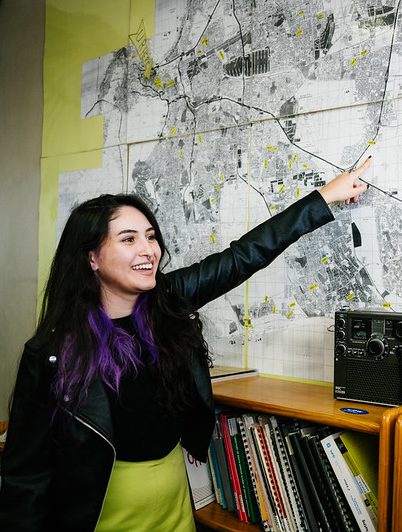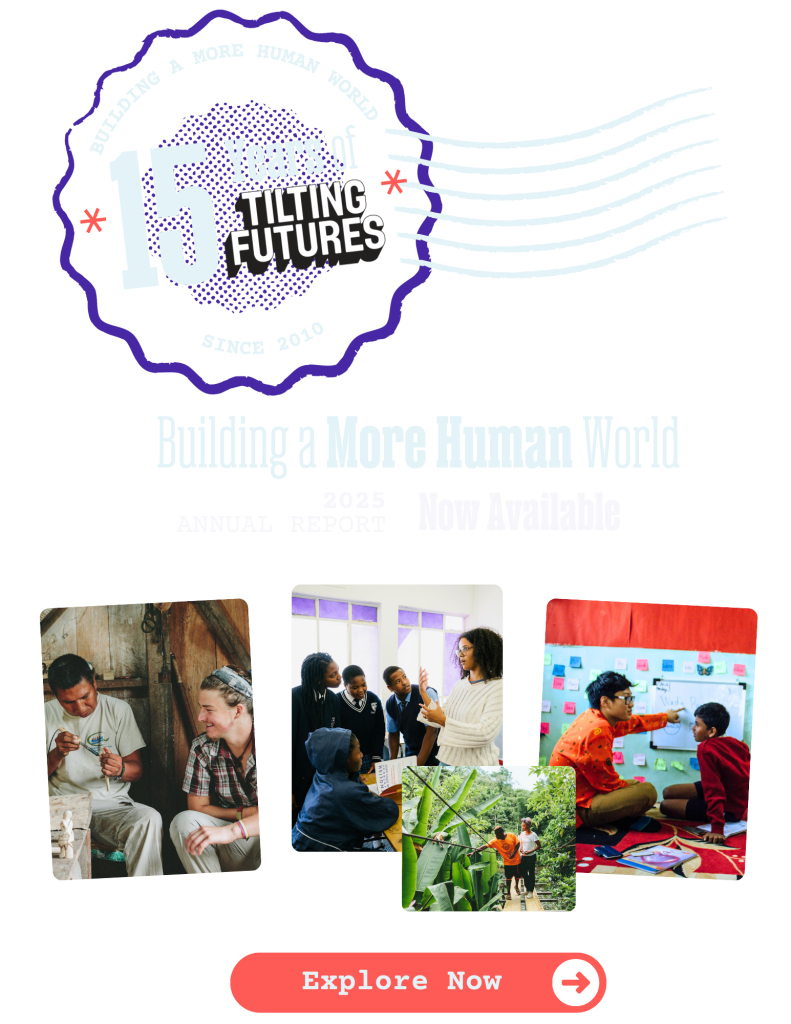RESOURCES
2024-09-20
What Are Some Environmental Issues? A Deep Dive into the Most Important Environmental Challenges
Explore the most important environmental issues facing our planet today and learn how these threats impact our future.
Published by Tilting Futures

In an era of profound environmental challenges, Tilting Futures is at the forefront of a movement to empower young people to create positive global change. As a nonprofit organization, Tilting Futures offers immersive gap year programs and apprenticeships that equip students with the tools needed for personal transformation and the ability to address pressing global issues. Through cultural immersion, hands-on learning, and skill development, these programs provide participants with the knowledge and experience required to tackle the world’s most critical environmental challenges. Understanding the complexities of environmental issues is essential for these future leaders. Grasping the interconnected nature of these challenges is the first step toward making a meaningful impact on our planet.
Understanding Environmental Issues: A Global Perspective
Environmental issues arise from the interaction between natural processes and human activities, often leading to significant disruptions in ecosystems, biodiversity, and human health. These challenges are global in scope, affecting every part of the earth and every aspect of life. From the melting ice caps in the Arctic to the deforestation of the Amazon rainforest, environmental issues know no boundaries and are deeply interconnected. Human activities, such as industrialization, deforestation, and pollution, have accelerated the pace of environmental degradation, exacerbating natural processes that would otherwise occur more slowly. Climate change, for example, is driven by both natural factors and the vast amounts of greenhouse gasses released by human activities. For participants in Tilting Futures’ programs, understanding these issues in their global context is crucial for developing informed, effective solutions.
The Role of Education and Action in Tackling Environmental Issues
Education is a powerful tool in combating environmental degradation. By raising awareness and educating future leaders about the challenges our planet faces, we can inspire a new generation of changemakers to take action. For Tilting Futures, this means providing students with both the knowledge and the practical skills necessary to address environmental issues effectively. Through hands-on experiences, participants learn about sustainable practices, environmental stewardship, and the importance of global cooperation in tackling these challenges.

Considering a semester abroad?
See how Take Action Lab could align with your goals.
Climate Change: The Driving Force Behind Many Environmental Issues
One of the most pressing environmental issues facing the world today is climate change. This global phenomenon is primarily driven by the accumulation of greenhouse gasses in the atmosphere, which trap heat and cause the planet’s temperatures to rise. The increase in global temperatures, often referred to as global warming, is caused by the excessive release of greenhouse gasses such as carbon dioxide and methane, primarily emitted through human activities like burning fossil fuels, deforestation, and industrial processes. The result is a warming planet that disrupts natural systems, leading to a host of environmental problems. Climate change is also linked to an increase in the frequency and severity of extreme weather events, such as hurricanes, droughts, and floods.
One of the most visible effects of climate change is the melting of ice caps and the subsequent rise in sea levels. As global temperatures rise, polar ice caps and glaciers are melting at an alarming rate, contributing to rising sea levels. This poses a significant threat to coastal regions around the world. Low-lying areas are particularly vulnerable to flooding, which could lead to the displacement of millions of people and the loss of valuable land. Coastal cities, many of which are densely populated, face the risk of being submerged if sea levels continue to rise at their current rate.
Biodiversity Loss: The Irreversible Consequences
Biodiversity—the variety of life on earth—is essential for maintaining the health of ecosystems and the services they provide. However, biodiversity loss is occurring at an alarming rate, driven by human activities that disrupt natural habitats and lead to the extinction of species. Biodiversity encompasses all living organisms, from plants and animals to microorganisms. It plays a critical role in maintaining ecological balance, supporting functions such as pollination, nutrient cycling, and climate regulation. Without biodiversity, ecosystems would fail, leading to a cascade of environmental problems that would ultimately threaten human survival. Deforestation, habitat destruction, and illegal wildlife trade are among the primary drivers of biodiversity loss. Forests, which are home to a vast array of species, are being cleared at an alarming rate for agriculture, urban expansion, and other human activities.
One of the most significant contributors to biodiversity loss is deforestation—the clearing of forests for various human activities. Often referred to as a silent crisis, deforestation has devastating effects on the environment and the species that inhabit these areas. Deforestation is primarily driven by the need for agricultural land, timber, and urban development. As forests are cleared, the carbon stored in trees is released into the atmosphere, contributing to climate change. Additionally, the loss of forest cover leads to soil erosion, reduced water quality, and the destruction of habitats that are crucial for many species. Efforts to combat deforestation are underway at both international and local levels. Initiatives such as reforestation and sustainable land management practices are being implemented to restore degraded forests and protect remaining ones.
Pollution: A Multifaceted Threat to Health and Environment
Pollution is another major environmental issue that poses a threat to both human health and the environment. It comes in many forms, including air pollution, plastic pollution, and water pollution, each of which has its own set of challenges and consequences. Air pollution is caused by the release of harmful substances into the atmosphere, primarily from industrial processes, vehicle emissions, and burning fossil fuels. These pollutants can have severe health impacts, including respiratory diseases, heart conditions, and premature death. Moreover, air pollution contributes to climate change by increasing the concentration of greenhouse gasses in the atmosphere.
Plastic pollution is a growing crisis, particularly in the world’s oceans. Millions of tons of plastic waste end up in the ocean each year, where it harms marine life and disrupts ecosystems. Marine animals often mistake plastic for food, leading to ingestion and entanglement, which can be fatal. The persistence of plastic in the environment means that its impact will be felt for generations to come. Water pollution is a global challenge that affects the availability of clean water for drinking, agriculture, and sanitation. Contaminants such as chemicals, pathogens, and heavy metals pollute bodies of water, making them unsafe for human use and harming aquatic ecosystems. Access to clean water is a fundamental human right, yet water pollution continues to threaten the health and well-being of millions of people around the world.
The fight against pollution requires action at every level, from individual choices to global policies. Sustainable practices, such as reducing waste, recycling, and using clean energy can help mitigate the effects of pollution and protect the environment for future generations. Individuals can make a difference by adopting eco-friendly habits, such as reducing plastic use, conserving water, and supporting clean energy. Communities can work together to implement waste management systems, promote sustainable agriculture, and protect natural resources. Governments have a critical role to play in regulating pollutants, enforcing environmental laws, and supporting clean technology. Tilting Futures integrates these sustainable practices into their programs, teaching students how to live sustainably and become stewards of the environment. By promoting environmental awareness and action, Tilting Futures helps participants develop the skills and knowledge needed to address pollution and other environmental challenges effectively.
Food and Water Insecurity: The Growing Crisis
Climate change and environmental degradation are also contributing to a growing crisis of food and water insecurity. As temperatures rise and weather patterns become more erratic, global food production is increasingly under threat. Rising temperatures and changing precipitation patterns are affecting crop yields, leading to food shortages in some regions. Extreme weather events, such as droughts and floods, further exacerbate the problem, making it difficult for farmers to produce enough food to meet the needs of growing populations. Water scarcity is another critical issue, with many regions facing the prospect of running out of fresh water.. Sustainable agriculture practices, such as crop rotation, organic farming, and water conservation, are essential for addressing food and water insecurity. By adopting these practices, farmers can reduce their environmental impact and improve the resilience of their crops to climate change.
Addressing food and water insecurity requires both local and global action. Community-based solutions are vital for ensuring that resources are managed sustainably and that food and water are distributed equitably. Local communities can implement practices that enhance food security, such as community gardens, rainwater harvesting, and sustainable farming techniques. International efforts are also needed to address the root causes of food and water insecurity, including climate change, poverty, and inequality. Global cooperation can help ensure that resources are shared fairly and that vulnerable populations have access to the food and water they need to survive.
Overpopulation: Strain on Natural Resources
Overpopulation is another significant environmental issue, as the growing human population puts increasing pressure on the planet’s natural resources. As the world’s population continues to grow, the demand for resources such as food, water, and energy increases. This leads to the depletion of natural resources, which in turn exacerbates other environmental issues such as deforestation, pollution, and climate change. Overpopulation also contributes to environmental degradation by increasing the demand for land, leading to habitat destruction, loss of biodiversity, and pollution.
One of the most effective ways to address the environmental challenges posed by overpopulation is through sustainable development—a model of growth that meets the needs of the present without compromising the ability of future generations to meet their own needs. Sustainable development aims to balance economic growth with environmental protection, ensuring that resources are used efficiently and that the environment is preserved for future generations. This approach is crucial for mitigating the environmental impact of overpopulation and ensuring that the planet can support a growing population.
Become a Changemaker
The environmental issues facing our planet are vast and complex, but they are not insurmountable. Through education, action, and global cooperation, we can address these challenges and build a more sustainable future. Tilting Futures is committed to empowering the next generation of changemakers to take on these challenges and make a positive impact on the world.
If you are passionate about making a difference and want to be part of the solution, Apply Now to Tilting Futures’ programs. Together, we can shape a future that is not only sustainable but also hopeful.



